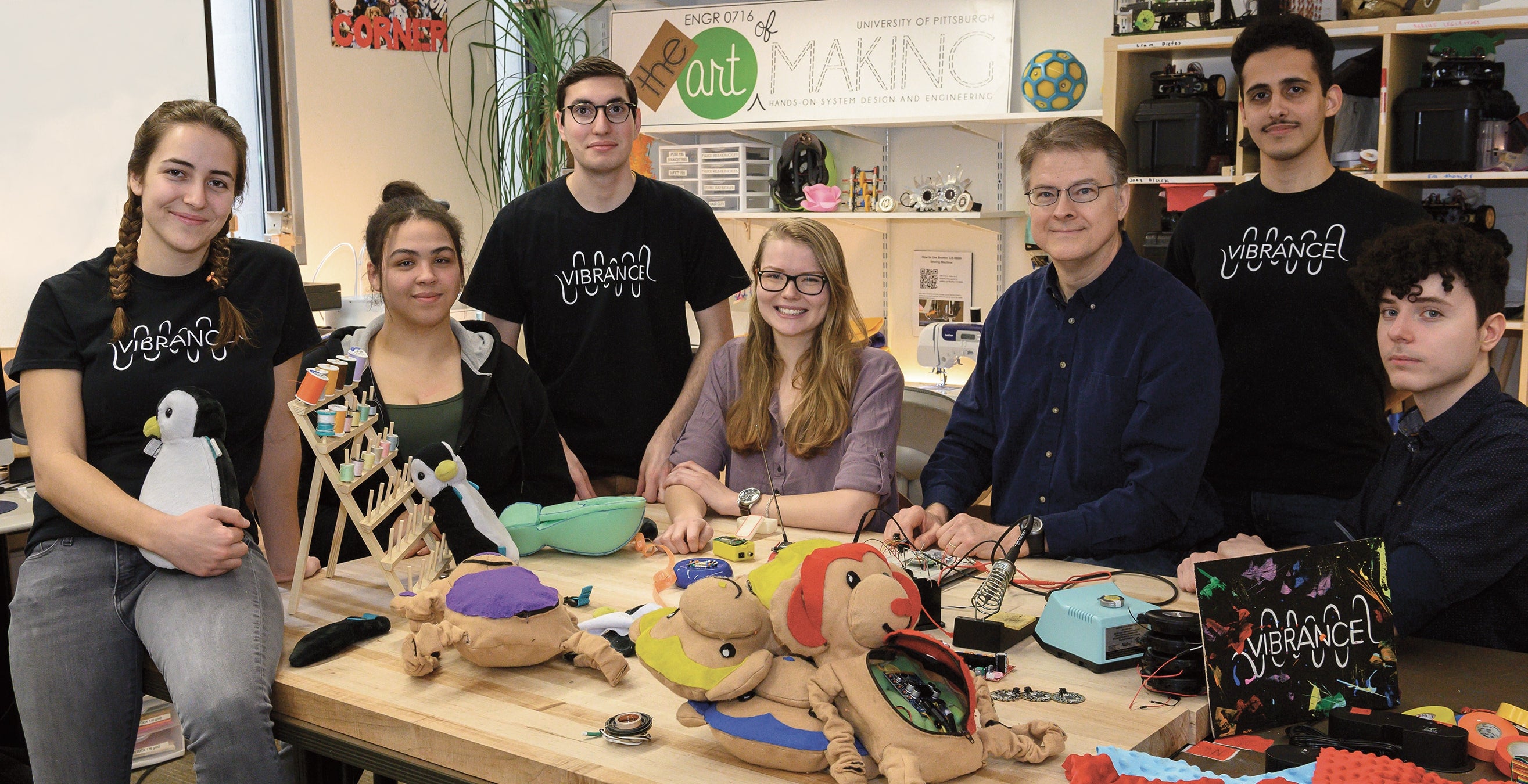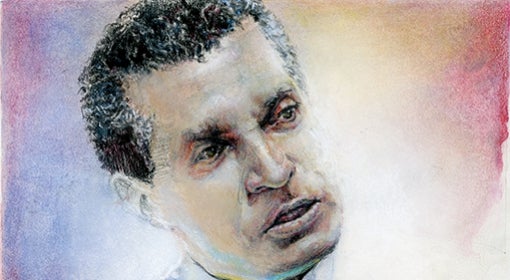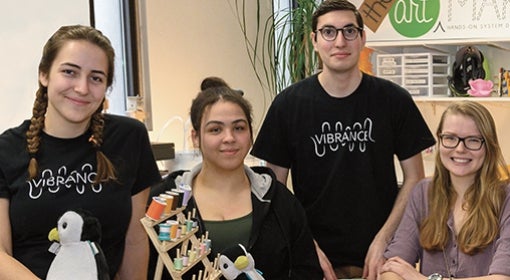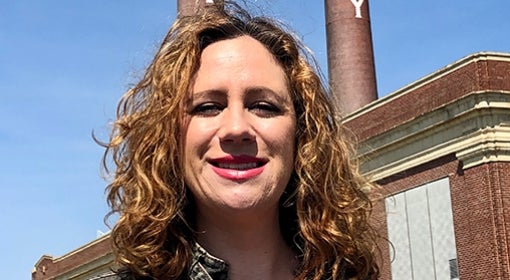The little girl spins in a circle, bounces side to side, feet stomping and hands wiggling. She dances to the beat.
A special dance partner—a smiling plush monkey with elastic arms and a purple belly—hugs her neck. All around, her preschool classmates are dancing, too, copying the teacher’s steps as music fills the room.
But these children aren’t hearing the music; they’re feeling it.
The students are from the Western Pennsylvania School for the Deaf (WPSD). The stuffed animals they embrace contain transducers, which convert the songs playing over the classroom’s speakers (and transmitted to the monkeys via Bluetooth) into palpable vibrations, helping the hearing-impaired youth groove to Bach or Beyoncé.
Watching the preschoolers step in time, Joseph Samosky can’t help but grin—and the Pitt assistant professor of bioengineering has a lot to smile about. The monkeys were designed and built by undergraduates in his class, The Art of Making: An Introduction to Hands-On System Design and Engineering.
His students get an immersive experience inventing and prototyping innovations that address real-world challenges. From their collaborative workshop in Benedum Hall, they experiment with everything from robotics engineering to sewing machines.
It’s a multidisciplinary approach to creation Samosky knows well. He has degrees in electrical engineering, behavioral neuroscience, computer science and medical engineering, which he’s applied to work designing medical devices. He’s driven by the belief that empathy is key to engineering excellence. The most effective way to make a product or service that satisfies a community’s needs, he teaches his classes, is to first understand that community.
Before starting their prototyping process, the 11-student team that created the assistive monkeys spoke with WPSD teachers and participated in a workshop for the children led by Attack Theatre Dance Company. The experiences helped them understand the kids’ needs and gave them insight into the significance dancing can have to the deaf community, where movement and communication are deeply intertwined.
“I hope to engage students in a process of active discovery of the big-picture why to motivate learning the how of engineering,” Samosky says.
The team’s work has been well-received, and not just at WPSD. The wearable technology caught the attention of engineers at MIT, who invited the students to apply for the renowned Lemelson-MIT Student Prize. Even now, long after earning course credit, the team continues to develop the system for widespread use with material and mentorship support from Pitt’s new Classroom to Community program, which Samosky directs.
In previous semesters, Samosky’s students have developed other difference-making devices, including a product that allows people with Parkinson’s disease to stand up straight and another that helps visually impaired children play a version of basketball.
But seeing these inventions in use is only part of the joy Samosky takes in The Art of Making. Nothing is as good as watching his students connect with ideas and each other as they waltz beyond the boundaries of their own imaginations.
Cover image: Members of the team, from left: Jocelyn Dunlap, Natalie Neal, Jesse Rosenfeld, Caroline Westrick, Samosky, Issam Abushaban and Thomas Driscoll
This article appears in the Fall 2020 edition of Pitt Magazine.





